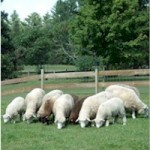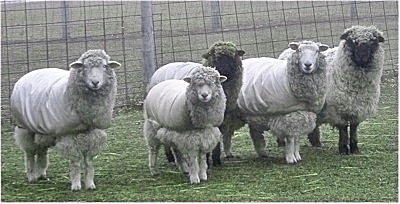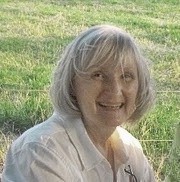 Today we’re running a post on something I was particularly excited about sharing with the dance community…wool for pointe shoes. When I was researching different topics for possible inclusion this month, I came across Pine Acres Woolstock, which is located in northwestern Wisconsin.
Today we’re running a post on something I was particularly excited about sharing with the dance community…wool for pointe shoes. When I was researching different topics for possible inclusion this month, I came across Pine Acres Woolstock, which is located in northwestern Wisconsin.
Pine Acres has a small flock of Romney/Rambouillet sheep, and the owner, Teresa Smit, processes some of their wool for use in pointe shoes. I reached out to her to learn more, and she was kind enough to tell us a bit about how wool is processed and prepared for use in pointe shoes…
- Can you tell readers a little bit about how you got involved with producing pointe shoe wool?
I am really combining two loves from childhood. I grew up on a farm and am a country girl at heart. During my childhood I enjoyed 11 years of dance, including pointe, and understand the value of wool for padding the toes. Raising a flock of sheep now keeps me happily connected to both worlds.
- What is the process like of processing the wool for ballet dancers?
 Softness and cleanliness are my two criteria for pointe wool. Softness in wool is determined by the breed of sheep. The Rambouillet breed produces soft, fine wool and is the basis for my pointe wool. The sheep are shorn once a year, usually in April. After shearing, a cover is placed on each sheep which is worn throughout the year. It is replaced with a larger one periodically as the wool grows. These coats protect the wool from the elements of weather and keep the fleeces nice and clean. After shearing, the wool is washed and sent to the woolen mill to be processed.
Softness and cleanliness are my two criteria for pointe wool. Softness in wool is determined by the breed of sheep. The Rambouillet breed produces soft, fine wool and is the basis for my pointe wool. The sheep are shorn once a year, usually in April. After shearing, a cover is placed on each sheep which is worn throughout the year. It is replaced with a larger one periodically as the wool grows. These coats protect the wool from the elements of weather and keep the fleeces nice and clean. After shearing, the wool is washed and sent to the woolen mill to be processed.
- What are some of the benefits of wool?
The structure of wool fibers could never be duplicated in a factory. The fibers breathe naturally, absorb and wick moisture away, and are crimped like little coiled springs that provide natural elasticity and bounce. Wool is ecologically friendly-it is renewable and sustainable.
- What else do you do with the wool after it is gathered?

My natural-colored black, gray, and silver wool is processed into handspinng rovings, which are long, narrow bundles of wool fibers. Hand spinners spin the rovings into yarn for knitting and weaving. Some wool is processed into comforter batts for quilters. And I dye some white wool for felters.
- Do you have “regular” buyers in the dance community for your wool?
Yes, I have many faithful customers, both pointe teachers and individual dancers. Interestingly enough, some buyers of pointe wool are elderly who use pointe wool on their feet for medical reasons, and some are runners who need relief from sore feet after a long run!




